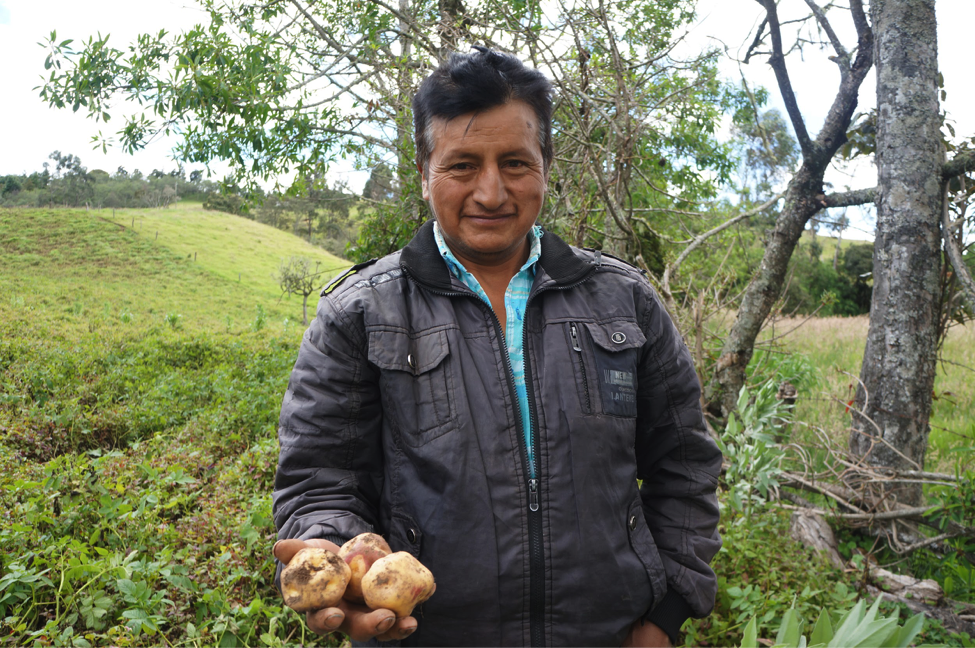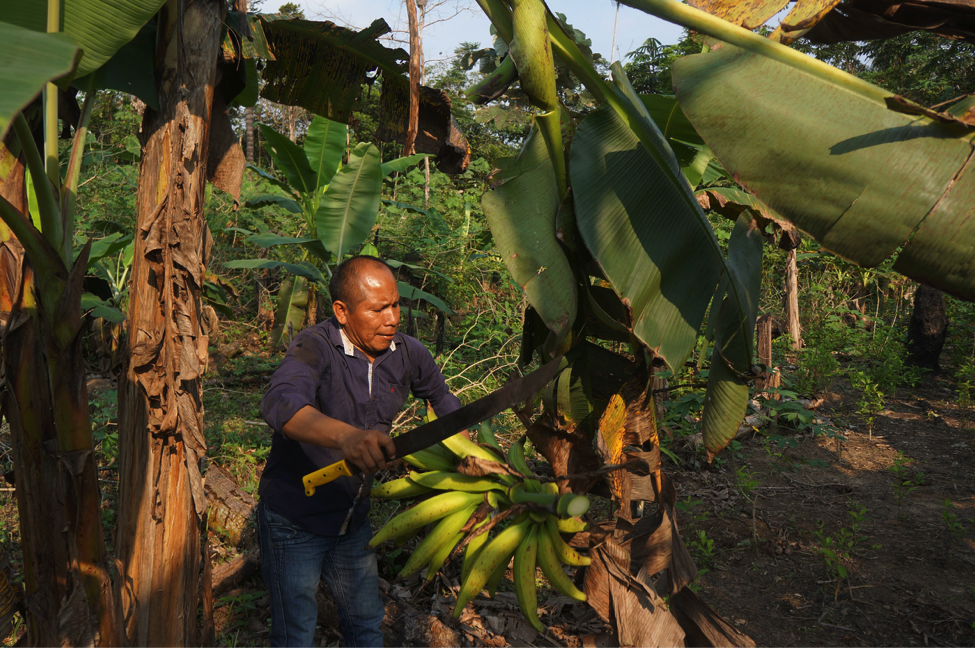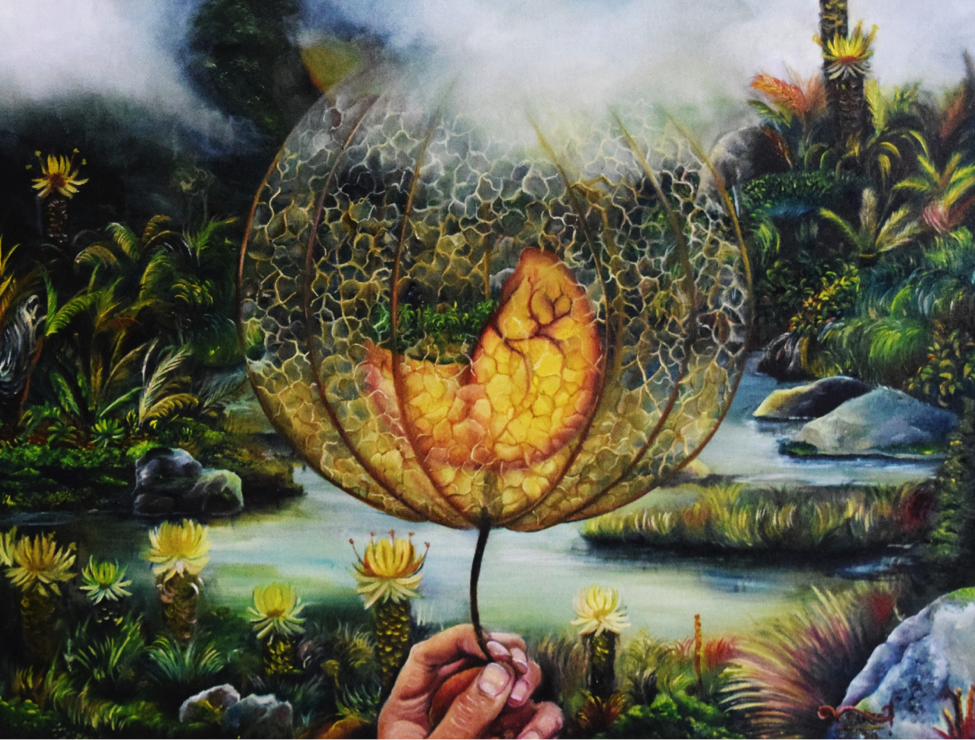The longest running successful experiments in sustainable human land use are found within the collectively held lands of traditional communities, who have lived for generations in balance with the ecosystems of their ancestral territories. Looking to Indigenous socio-ecological systems, traditional knowledge, and integrated interpretations of what "nature" is and how to live in balance with the natural world, holds great promise and utility for achieving goals of "sustainable development", ecological conservation and restoration, and the prevention of novel disease emergence.
Firmly established globalized systems --- such as our industrial food system --- are built on ideals of anthropocentrism and reductionist knowledge. They push for unlimited economic growth and production, natural resource exploitation, property ownership and consumerism, and are being shown as unsustainable and ineffective in addressing the systemic problems facing our species and the interconnected living planet. Global calamities, from climate change to biodiversity loss to the COVID-19 pandemic, are consequences of this dominant paradigm.
We are in desperate need of more integrated approaches that recognize our interdependent place in the natural world. Strengthening interdisciplinary and intercultural collaboration will encourage a paradigm-shift towards integration, as will the sharing of knowledge between people with different worldviews.
Science and Traditional Indigenous Knowledge Can Complement Each Other
Scientists in particular can gain a more holistic understanding of nature by studying the traditional practices and knowledge of Indigenous people. Temporal limitations for recognizing sustainable models --- where "sustainable" in a literal sense means "enduring over time" --- is less pertinent when considering traditional Indigenous communities who have lived in balance with the ecosystems of their ancestral lands for generations.

Likewise, Indigenous communities can benefit from advances in modern science. Climate change is leading to unpredictable and extreme weather, while centuries of conflict, land-grabbing, displacement, disease, deforestation, mining, damming and other extensions of the modern industrialized world, has fragmented, reduced and contaminated Indigenous territories and waterways. Indigenous communities are increasingly vulnerable and have limited and degraded land on which to continue their traditionally sustainable practices, and to isolate themselves in the face of existential threats like COVID-19. Introducing scientific tools and culturally-appropriate technologies to Indigenous communities can help them to fortify their traditions, knowledge, and capacity to monitor, adapt and defend themselves and their territories.
Are Indigenous People Anti-Science?
From my experience as a scientist working with a diverse spectrum of traditional Indigenous peoples over the past five years --- on themes ranging from water quality, deforestation and food security, to alternative energy and income sources, and the transmission and preservation of traditional knowledge --- I have come to understand that many, if not all, Indigenous leaders and their communities are open to acquiring and implementing new forms of knowledge from the "Western World." This runs contrary to the frequently romanticized misconception that traditional Indigenous peoples categorically shun all aspects of the modern world and what we term "science." In fact their complex socio-ecological systems are based on extensive empirical knowledge of their territories.The caveat for an open dialogue of knowledge sharing with Indigenous communities is that the newly acquired "occidental" knowledge and proposed initiatives address the needs as determined autonomously by the Indigenous communities. Furthermore, the implementation must respect and align with Indigenous worldviews, especially of living in interconnected and interdependent harmony with "Mother Earth." Listening, not imposing preconceived notions, is fundamental to these dialogues.
Traditional Indigenous food systems are a central part of an integrated socio-cultural harmony and interdependent relationship with Mother Earth. Such is the case for Amazonian Indigenous peoples who practice a traditional form of shifting "slash-and-burn" agriculture known as "chagras." Ceremonies revolve around themes of the chagras, while chagras also form the basis of family structures, local governance, health and survival. Indigenous agricultural systems like chagras fortify a deep connection between the people, their food, and the Mother Earth. This is the opposite of modern industrial agriculture and food systems that decentralize and disconnect food consumption from food production.
Complex Systems Science and Integrated Food Systems
While a graduate student in physics at the University of California, Santa Cruz, I was influenced by the ideas and lectures of Dr. Stephen Gliessman, a pioneer of modern agroecology. At the time --- and to this day --- I was fascinated by thestudy of complex systems, whose principal objective is to recognize and understand forms of order and "emergent" collective behavior within dynamic nonlinear systems of diverse interconnected components. In many ways complex systems science is the antithesis of scientific reductionism. The frameworks developed are interdisciplinary and applicable to cosmology, ecology, climate, neuroscience, law, socioeconomics, transportation, and much more; a so-called "Physics Beyond Physics."
Agroecology strives to achieve an integrated balance between ecological science, traditional and local knowledge, and the equitable and culturally appropriate production, distribution and consumption of food. Importantly, agroecology is not a "one size fits all" approach: the unique web of biological and sociocultural interactions within each agroecological system must be understood if long-term sustainability is to be achieved. Agroecology and other resilient frameworks for integrated food systems are practical, beautiful examples of the ordering of complex systems, and demonstrate the power of shared knowledge and intercultural collaboration.
Integrated Food Systems Can Help Enhance Biodiversity and Protect Against Novel Pathogen Emergence
Conversion of natural ecosystems to human-dominated landscapes, including urban centers and industrial farms with monocultures and confined domesticated animals, decreases biodiversity. Certain adaptable species, especially rodents and bats, can thrive in these simplified cohabitation settings, while carrying diseases that can spillover into domesticated species and humans. These "weedy species" have been responsible for many past disease outbreaks.
Novel disease emergence also reinforces the need to support integrated food systems like traditional Indigenous swidden agriculture and modern agroecological models that promote biodiversity and long-term sustainability. These kinds of small-scale, localized integrated food systems with high biodiversity, are good models for preventing the occurrence and spread of pathogens, for humans, other animal species and plants.
Finding the Balance Between Integrated Science and Traditional Practices in Agriculture: Examples from Colombia
Globalized industrial food systems disconnect food consumption from food production, while traditional Indigenous food systems are the cornerstone of an interdependent sociocultural relationship with "Mother Earth."
The work of several of my colleagues in Colombia illustrates the power of synthesizing traditional Indigenous agricultural practices and modern integrated science.
Advances in microbiology are demonstrating that diverse microorganisms in soils --- and the human microbiome --- are essential to healthy complex ecological systems. Microbiologist Dr. Clara Peña of the SINCHI Institute immerses herself in the tremendous biodiversity of acidic, low-fertility Amazonian soils. She studies Amazonian chagras, ancient high-fertility Terra Preta ("Amazonian Dark Earth"), and is a strong proponent of cassava cultivation. Cassava --- also known as yuca or manioc --- has long been a staple crop of Amazonian Indigenous communities and civilizations, due to its ability to thrive in low-nutrient soils via interactions with arbuscular mycorrhizal fungi. Dr. Peña postulates that with accelerating climate change and degraded lands, cassava holds promise as a global staple crop. "I believe that cassava is one of the most important contributions that Indigenous people of the Amazon region have given to the modern world," writes Dr. Peña.
Dr. Jairo Cuervo is an Agricultural Scientist at the National University of Colombia. He works with integrated agricultural systems, and studies the impacts of expanding agricultural frontiers and chemical inputs in different soil types and ecosystems. He also researches Indigenous agricultural techniques, and is currently studying the ancient Indigenous system of spiral agriculture. Positive results are being observed for pest control, soil fertility, irrigation and aeration. We hope to reintroduce spiral agriculture into Indigenous communities who are currently adopting unsustainable agricultural practices. The Misak and Nasa tribes, who live at the base of the vital paramo ecosystem in the Andes of Cauca, Colombia, previously practiced a form of spiral agriculture within their ecological calendars. I work with Misak and Nasa leaders who are actively trying to recover lost traditions; interestingly the spiral is depicted on ancient petroglyphs within their territories, and remains a symbol central to their distinct worldviews.
Within Muina-Murui (or "Huitoto") territories, all aspects of autonomous traditional Indigenous life are based around the chagras. Muina-Murui leader Jesus Rotieroke and other Indigenous leaders are "mambeando" --- thoughtfully contemplating --- the evident changes to the biogeochemical cycles of the Mother Earth. They know a balance must be found between traditional and modern understandings of nature if their cultures, territories and traditional food supplies are to survive. With eyes towards long-term sustainability, Rotieroke's daughter, Susan, was sent to study agroecology at the University of the Amazon.

These and many other examples around the world illustrate how an alliance between modern integrated science and traditional knowledge can be a powerful tool for increasing resilience and solving some of our most acute local and global challenges. The blossoming intercultural partnerships between traditional local food systems and advanced integrated science can help lead the way towards a new paradigm of "development" based on a respectful interdependence with the natural world.
Also published on unboubdedworld.com.
---
This blog is a submission to Thrive by a non-CGIAR author and represents the opinions of the author only.
















